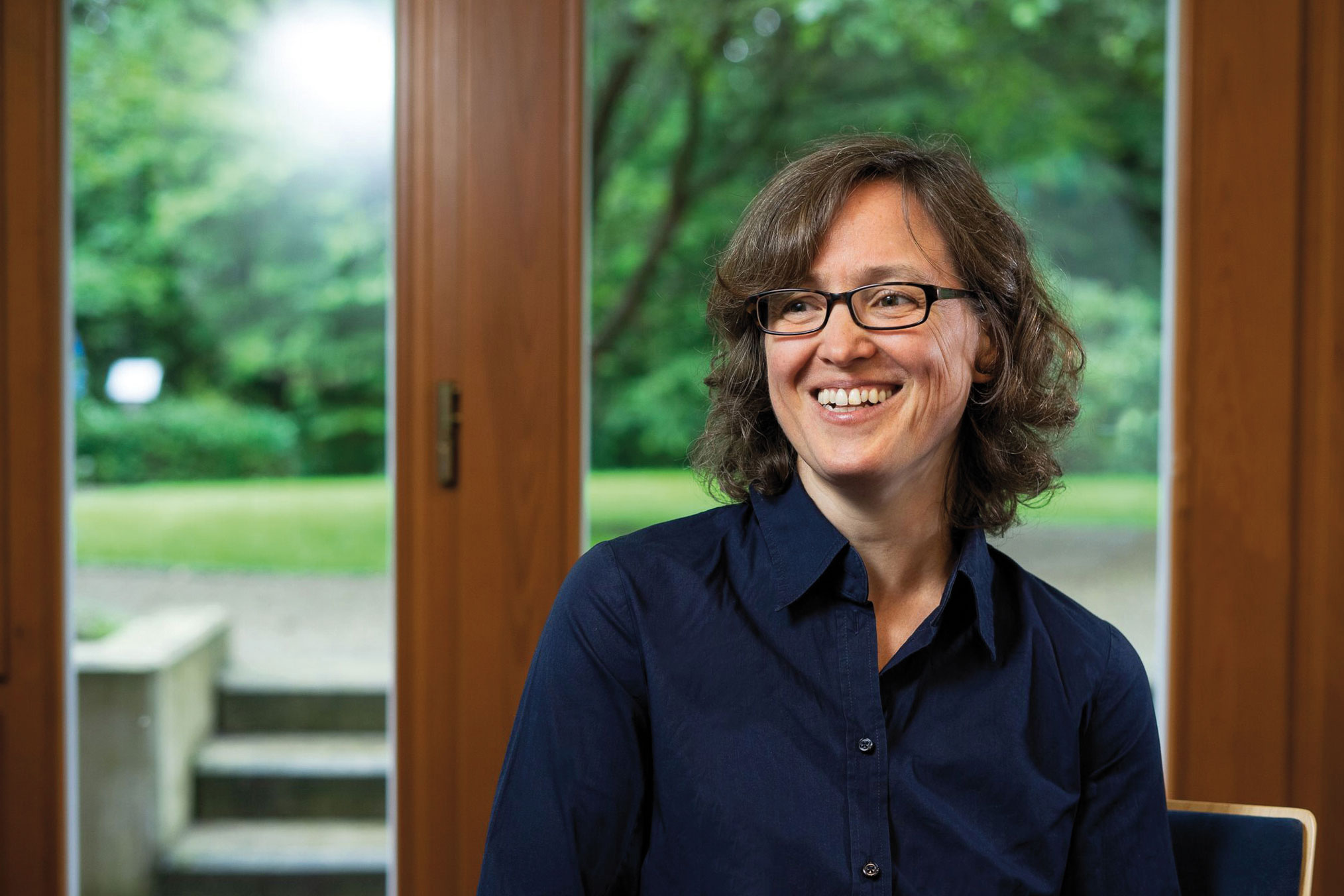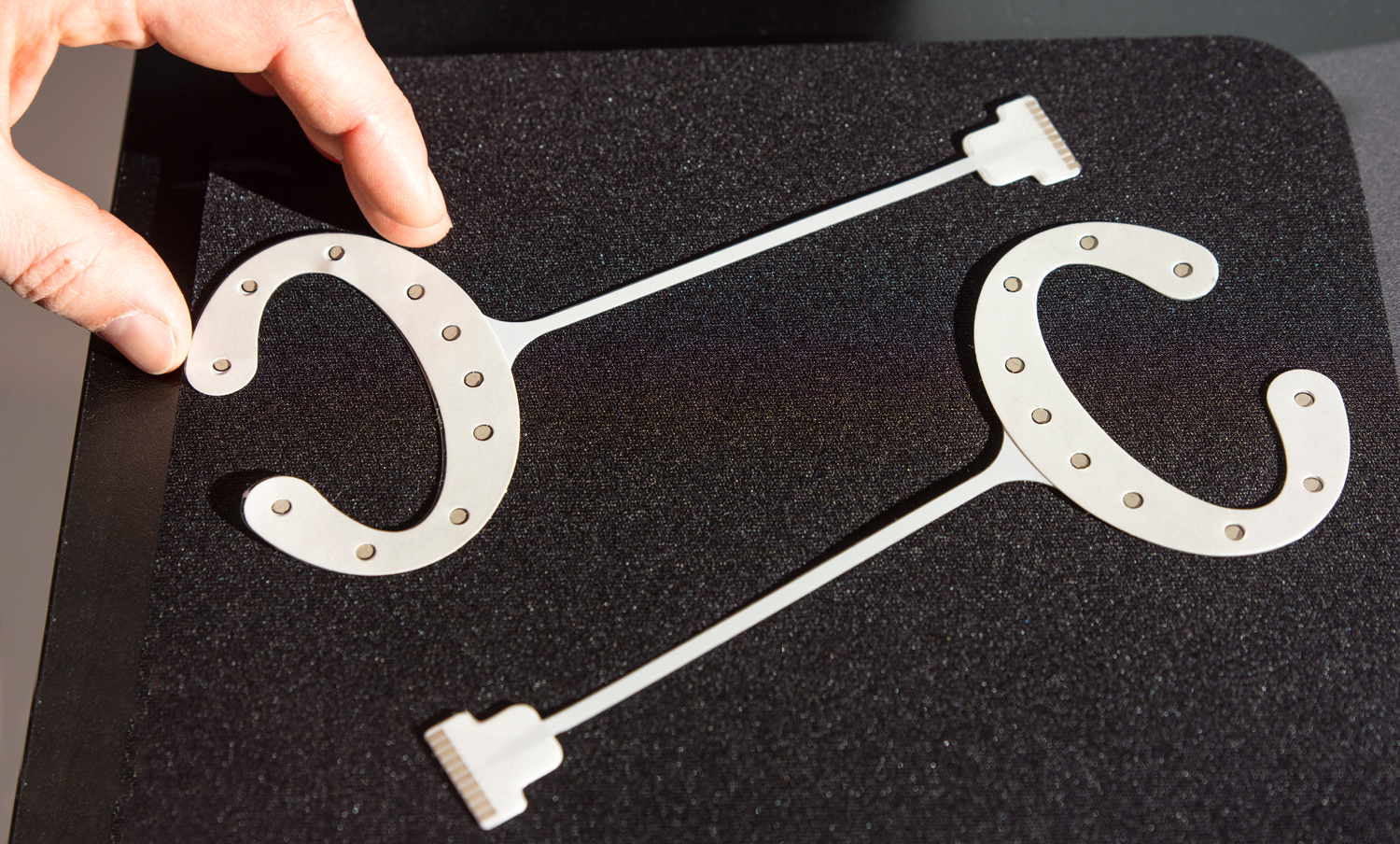Interview with Dr.-ing. Insa Wolf
The interpretation of signals emitted by the human brain is a challenge. The »Mobile Neurotechnologies« group at the Fraunhofer IDMT in Oldenburg has picked up the gauntlet and wants to make electroencephalography (EEG) systems available for concrete application scenarios – for example in medicine or safety-critical workplaces. The group led by Dr.-Ing. Insa Wolf is working in particular on mobile EEG systems suitable for everyday use in the analysis of brain activity.

Dr Wolf, what particular advantages does the EEG procedure offer?
Bringing the mobile EEG laboratory into people’s everyday lives is particularly fascinating for me.
»Our discreet and portable system means there is no need for wearers to interrupt what they are doing«
With the EEG signal, we make activities in the brain over the course of the day visible. The result is valuable information about compensatory processes. However, further experience is needed for designing, conducting and interpreting the measurements.
It’s naturally an advantage that the members of your group and you yourself can already supply the necessary know-how! Have there so far been any bigger challenges nonetheless that you’ve had to master?
The »EEG laboratory to go«, which is being developed step by step, should make it possible to record data outside the laboratory over longer periods of time. This is because how valid the results of EEG analyses are greatly depends on how consistently a specific situation is documented. The following applies here: The longer the observation time the better. And: Wearing an EEG cap over a longer period – the method used so far – meets with a very low level of acceptance in everyday life. Another reason why we’re focusing on mobile systems that are as inconspicuous as possible. Interpreting the data collected requires statistical and machine learning know-how. In both areas, we’re profiting greatly on the one hand from our expertise in audio signal processing and on the other hand from research in the »Hearing4All« cluster of excellence at the University of Oldenburg.
This sounds fascinating! What concrete application scenarios do you currently have in mind?
Our goal is to make a substantial contribution to the diagnosis of conditions such as sleeping disorders or epilepsy with our solutions. In the framework of the »ATTENTION« project funded by the Federal Ministry of Education and Research, we’re conducting trials on attention in adult ADHD patients. Identifying situations that lead to high cognitive stress is another interesting aspect. The latter makes it possible to design particularly efficient and safe workplaces. A large number of human-machine interfaces exist where even just a brief moment of inattentiveness can have serious consequences. In the »NeuroSea« project, which has now finished, we used the ship handling simulator on the Elsfleth campus of Jade University of Applied Sciences to examine more closely the cognitive stress experienced by a ship’s captain during docking. As you can see, there are many different application scenarios for a »mobile EEG laboratory«. That’s why we’re exchanging ideas for future projects with partners from a wide range of sectors in order to develop our approaches further.
In 2017 you were accepted by the Fraunhofer’s Talenta Speed Up support programme and in 2018 you became group leader – did the programme help you and is it a source of support for the challenges you’re dealing with now?
A definite »Yes!« from me. A programme such as Talenta already helps to formulate short and long-term objectives more clearly. At the same time, it’s helping me to find my feet in my new role. Part-time leadership positions are still a new model at Fraunhofer too, which in my view can only further enrich application-based research.
Last modified:
 Fraunhofer Institute for Digital Media Technology IDMT
Fraunhofer Institute for Digital Media Technology IDMT